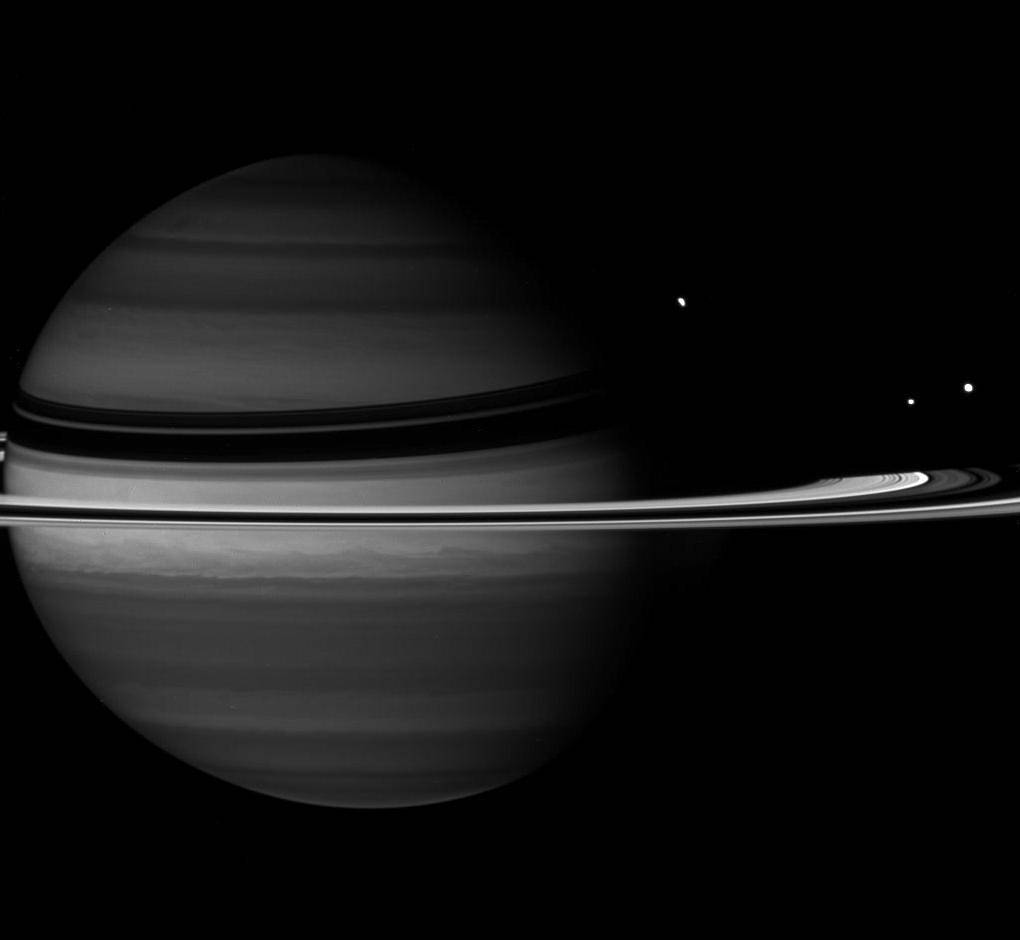
Just before Rhea slipped behind Saturn, the Cassini spacecraft captured the moon in its disappearing act.
Along with the partly obscured Rhea (949 miles, or 1,528 kilometers across) are Tethys (665 miles, or 1,071 kilometers across), at right, and Enceladus (314 miles, or 505 kilometers across), left of Tethys.
At the wavelength in which this image was taken, absorption of sunlight by methane gas in Saturn’s atmosphere is strong, causing the planet to appear darker than at other wavelengths.
This view looks toward the unilluminated side of the rings from about 4 degrees above the ringplane. The image was taken with the Cassini spacecraft wide-angle camera on Nov. 9, 2007 using a spectral filter sensitive to wavelengths of infrared light centered at 890 nanometers. The view was acquired at a distance of approximately 1.7 million miles (2.8 million kilometers) from Saturn and at a Sun-Saturn-spacecraft, or phase, angle of 44 degrees.Image Credit: NASA/JPL/Space Science Institute
























